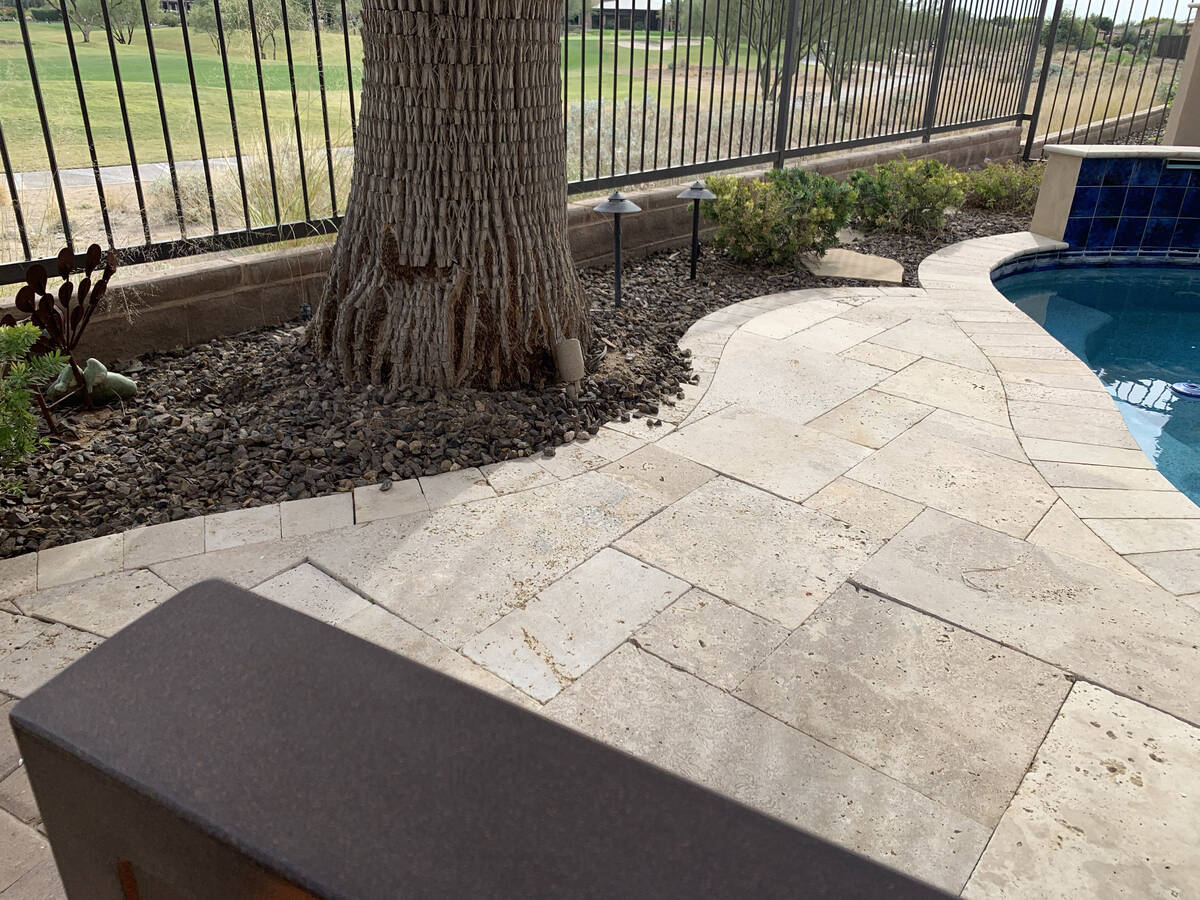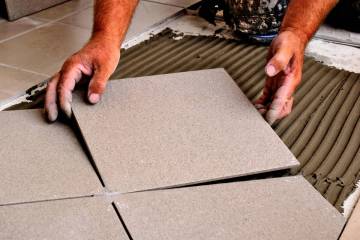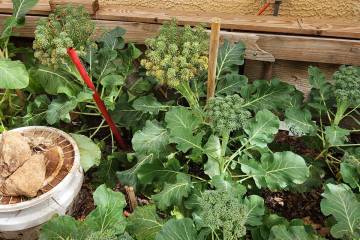Compost works best to amend the soil at planting time
The relationship between amending the soil at planting time, the choice of using woodchips as a surface mulch or applying crushed rock influences the types of plants found in your landscape. Of course, I like compost best to amend the soil at planting time, but other amendments will also work. Adding amendments to the soil does two things: It makes the soil “fluffy” (changes the soil structure by making the soil more porous) and adds whatever plant nutrients to the soil that it contains.
Some composts are rich and full of nutrients, i.e., made from sources of manure. Other times they are not so rich, and the addition of a fertilizer might be needed.
Some of the chemicals in the compost are inside the compost and released slowly as it rots in the soil. Others are quickly washed into the soil with the first few applications of water.
Some of these chemical additions can be good and some are not. It depends on what was used to make the compost. The only real way of knowing its chemistry is testing the soil through a certified laboratory or trusting the compost supplier.
Planting amendments like compost mixed with the soil at planting time, and then covering the soil with rock mulch, gives many plants somewhere between three and five years before the plant has problems (it doesn’t add the right kind of plant nutrients when it decomposes). By that time, the soil amendments used at planting time are gone. Plants sensitive to the loss of amendments respond by the leaves first turning yellow and scorching, followed by leaf drop and, finally, branch dieback.
Sometimes this process weakens the plants enough for insects like borers to finish the job. This is particularly true of plants like photinia, nandina/heavenly bamboo, sago palm, Japanese blueberry, Carolina cherry laurel and most fruit trees. Most commonly, but not always, borers are found in plants in the rose family.
There is a trick you can use if your landscape is already covered by rock. Rake back the rock to bare soil 3 feet away from these plants and apply a rich compost (or compost plus fertilizer) to the soil surface, water it in and put everything back including the rock and irrigation. If the landscape area has rocks bigger than 1 inch, the rich compost can be washed on top of the soil without raking the rock. It’s easier that way.
If you have had yellow plants in the past, count on using this method every three years. You might consider adding your favorite iron to this application if it’s applied in the spring.
Q: My husband and I are snowbirds from Canada. We try to have our yards as low maintenance as possible. The Mexican fan palms in our backyard are bulging up, pushed and broke the bricks on the ground again. How often are these pruned? Will they get much bigger?
A: Two most common palms considered for home landscapes are the Mexican and California fan palms. The difference between the two is that Mexican fan palm has a narrow trunk while the California fan palm has a very wide trunk.
These palms interbreed with each other so it’s very difficult to know exactly what you have even though you bought supposedly a Mexican fan palm.
So, unfortunately, it’s hard to predict how wide across your fan palm will get even though it’s called Mexican fan palm. When these fan palms grow about 10 feet tall, the width of the trunk probably won’t change a whole lot. Palms grow differently than trees and they don’t get much wider with age due to a lack of secondary growth after a few years.
Mexican and California fan palms get 60 (California fan palm) to 100 feet tall (Mexican fan palm). There are other palms that stay smaller than this and are better suited to residential landscapes. These palms produce seed from the flowers in about April.
If you have your palm pruned at that time of year you can have the flower stalks removed as well as the palm fronds. This eliminates seeds from being spit and germinating everywhere or landing in your pool.
It’s best to prune these palms every year but you could get by with pruning the fronds every two years. Ideally, you want the palms pruned so that the head of it is a half-circle. This means only removing fronds below horizontal.
I would discourage you from having it pruned as a “feather duster” with only a wisp of palm fronds at the very tip. Landscape maintenance companies encourage homeowners to do that so that they can get an extra year before pruning again. I wouldn’t recommend this as it weakens the palm.
Personally, I think these palms are too large for residential landscapes and it’s best to have them removed when they’re young. It’s expensive to remove them when they’re older.
By the way, they won’t produce shade of any amount as they get taller, and they are water guzzlers compared to the shade they produce.
Q: I am new to my home and inherited several Texas ranger bushes. Two of them are on long stems with bushiness only at the top. If I cut these way down, will they bush out, filling around the bottoms of the plant or will I kill it?
A: I am sure you are not alone with this problem. The short answer is yes, they will grow from the base if cut back.
But Texas rangers are slow to grow back after they have been pruned. They are not like oleanders which can grow back quickly as suckers.
They don’t sucker well from the base. Instead, they prefer to force their growth on existing stems just below the cuts.
It may be necessary to prune all the growth back close to the ground. Leave about 2 inches above the soil or rock for new growth to sucker from the stems.
This is a common pruning practice by landscape companies that don’t know what they’re doing. They use hedge shears about twice a year to shape these bushes instead of pruning them. Shaping works, but only on hedges. That’s why they are called hedge shears.
If you want to do it yourself, then use a sharp lopper or reciprocating saw and cut these big stems back 2 inches above the soil surface and let them sprout from the sides. If there are too many sprouts, pull them off so that only the ones you like remain. It speeds up the growth if you do that.
The best time to pull them off is in the spring otherwise you must prune them off. About every second or third year, prune two or three of the largest stems close to the soil surface and let the stems regrow from side sprouts.
Q: I am preparing to reseed a few bad spots in my lawn. I was surprised to find the ground completely infested with a spidery web of roots. The soil itself seems to have been changed to a fluffy, powdery texture. I’m thinking I should remove and replace the soil before seeding these spots but am concerned these crazy roots will grow back. Any ideas as to what they are and what I should do about them?
A: I am guessing this fluffy soil you’re talking about may be Bermuda grass rhizomes mixed with soil. That’s what your picture looks like.
To repair it requires removing all these rhizomes all the way down to solid bare soil. Once you have done that, the soil should be about at the right height for seeding.
I don’t think the soil will be lower than it needs to be. Since you are right next to a sidewalk, the soil should not be more than about 3/8-inch lower than the sidewalk. If it’s lower than this, you can add some soil to the area but I kind of doubt you will need to.
What bothers me, and if I’m right it is Bermuda grass, is why it’s there in the first place. Bermuda grass invades spots in the lawn that are drier than other areas. It out-competes fescue where it’s dry.
Sidewalks and driveways are hotter than other areas, so the lawn uses more water in these areas. Adjust your lawn sprinklers so this area gets more water. You may have to water the entire lawn more often or with more water just to compensate for this dry area unless you fix the irrigation problem.
Bermuda grass is even more aggressive if the lawn is mown short. Make sure the lawn is mown as high as possible during the months of April through October when Bermuda grass is most aggressive and no bevel cuts when you edge the lawn.
Bob Morris is a horticulture expert and professor emeritus of the University of Nevada, Las Vegas. Visit his blog at xtremehorticulture.blogspot.com. Send questions to Extremehort@aol.com.























